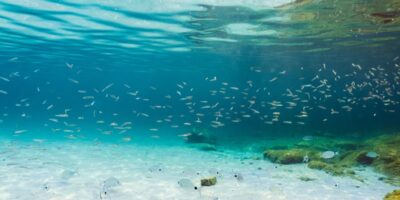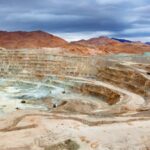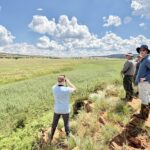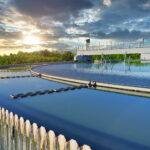Most maritime infrastructure projects are required to undergo vigorous environmental and cultural or social impact assessments before being given the green light to be implemented. These evaluations look out for evidence demonstrating avoidance, minimisation or mitigation of impacts in the preparation, actual construction and post-construction phases.
We ask Juan C. Savioli, Head of the Coastal and Estuarine Department in our office in Malaysia, six questions on ‘Working with Nature’ and whether it is possible to integrate this concept into marine infrastructure designs.
Q: Hi Juan, can you tell us more about the concept of ‘Working with Nature’ (WwN)?
Working with Nature (WwN) is an approach that aims to deliver beyond the standard impacts assessment approach to identify win-win solutions for maritime infrastructure projects and the environment – through careful consideration of natural processes and the social environment after extensive stakeholder engagement. This approach allows us to define strategies that maximise opportunities for navigation, nature and people. When we work with nature, we are constantly looking for opportunities to create and assimilate nature into the project designs and not only focus on ways to avoid or mitigate potential impacts. For me working with nature is about working smart and making use of natural resources to your advantage. I believe in working with nature, not against it.
Q: You’re talking about large infrastructure developments here. Is it really possible for such large-scale projects to benefit the environment?
Yes definitely! In fact, large-scale projects, due to their multiple phases and complexity, are ideal for WwN concepts to be applied. There are many available win-win opportunities to be identified so long as the WwN approach is high on the agenda of these type of projects. For smaller scale projects, WwN concepts can still be applied – although they are more restrictive in terms of opportunities and financial considerations.
Q: When is the best time for WwN to be considered during a project and why?
It is always better to plan earlier than later. This not only reduces the project risks in the long term but allows more time for identifying WwN opportunities. This is particularly true for global challenges like climate change where adaptation can be done based on WwN components that add additional values to the project.
Q: What are some of the ways that ‘Working with Nature’ can be implemented when it comes to maritime infrastructure projects?
To implement WwN, there are a few principles to be considered. PIANC (The World Association for Waterborne Transport Infrastructure) has recently published these new guidelines on WwN for large infrastructure projects:
- Define a clear and ambitious vision or objectives
- Understand the environment (physical, ecological, social)
- Make use of extensive stakeholder engagement
- Design using WwN concepts
- Build and implement
- Monitor, evaluate and adapt
These steps are not necessarily chronological but can provide large benefits in the sustainable development of infrastructure and has been a DHI trademark for over 30 years.
Q: Could you share an example of a real-life case study where Working with Nature was meaningfully integrated into the project?
The Fehmarnbelt Fixed Link – a joint Danish and German transport infrastructure project across the Fehmarnbelt – is an outstanding example of applying Working with Nature principles for a large marine infrastructure project. It’s not just about building the fixed link. It’s also about creating new habitats and recreational areas in ways that would benefit the environment. Together with other environmental and technical consultants, we identified opportunities to create and rehabilitate natural areas such as new beaches, new coastal lagoons, meadow areas with artificial islands designed for birds, and cliff areas that mimic the natural erosive processes observed in nature to supply sediment to nearby erosive areas. This project reflects the true concept of the Working with Nature principles.
Q: In this era where almost everything is digitalised, what are your thoughts about using digital technology to improve the way we conduct Environmental Impact Assessments (EIAs)?
The use of digital technology is helping us improve the way we work with nature. New digital approaches allow us to better understand the environment and produce more effective EIAs and Environmental Monitoring and Management Programmes (EMMPs). Some digital technologies that are supporting WwN activities include:
- Smart dredging operations: optimising dredging works with minimal or insignificant impacts
- Smart digital technology to reduce dredging works. By evaluating met-conditions, we are able to optimise the operation of ports.
- Digital systems to predict pollution paths such as plastic or oil spill
- Forecast systems
Forecast systems, for example, can support sustainable construction and predict future conditions. Although there is a certain level of uncertainty particularly related to future climatic changes, digital technologies can play a part in the monitoring and evaluation of present conditions for us to quickly adapt to changes.
Contact us to learn more about the way we work with nature and see how our approach can benefit your coastal and marine projects.








